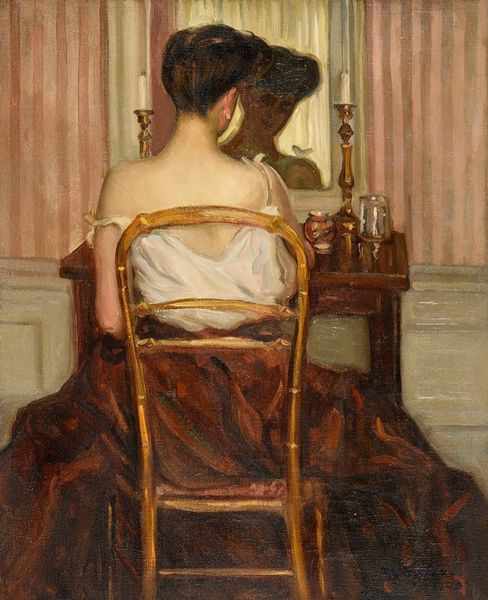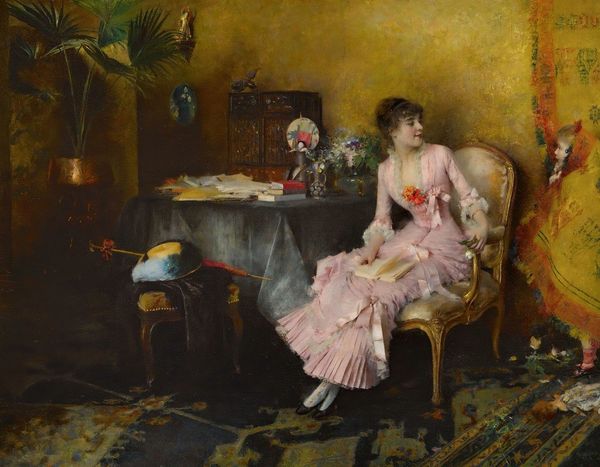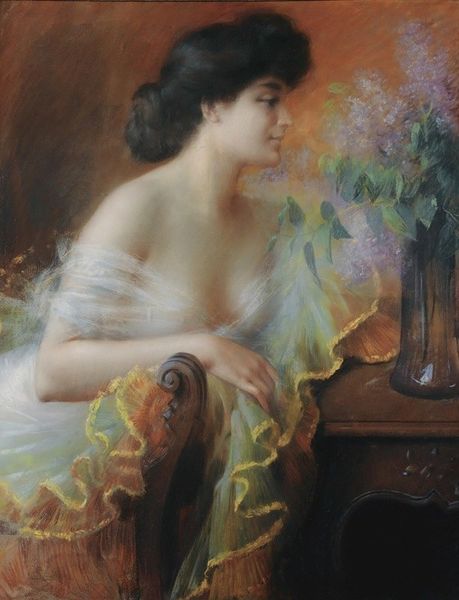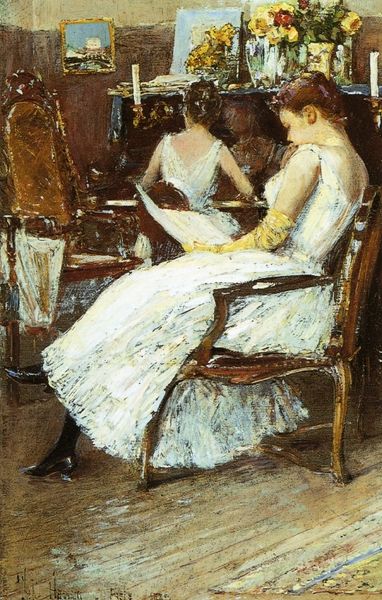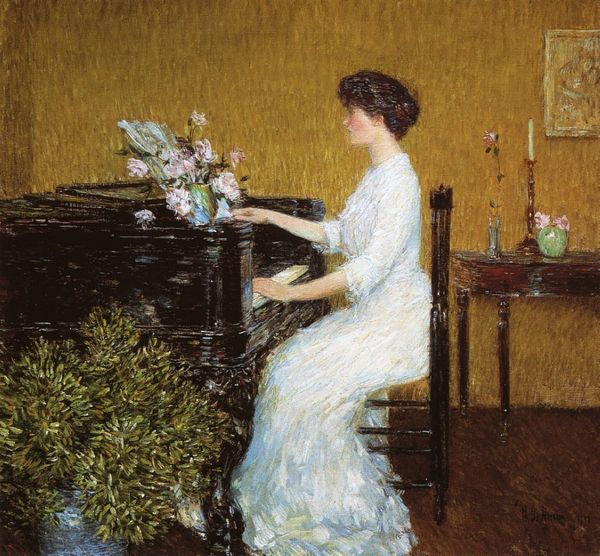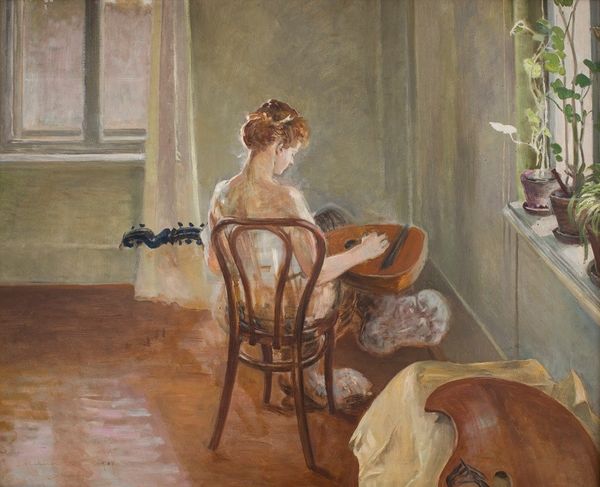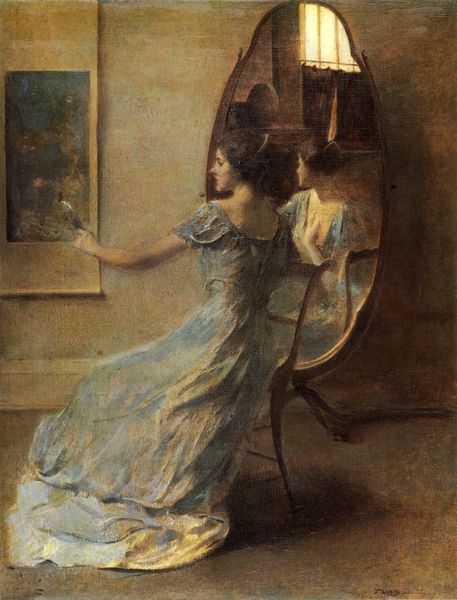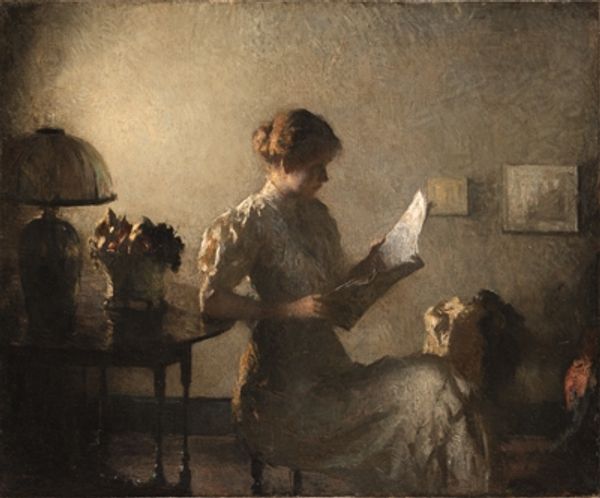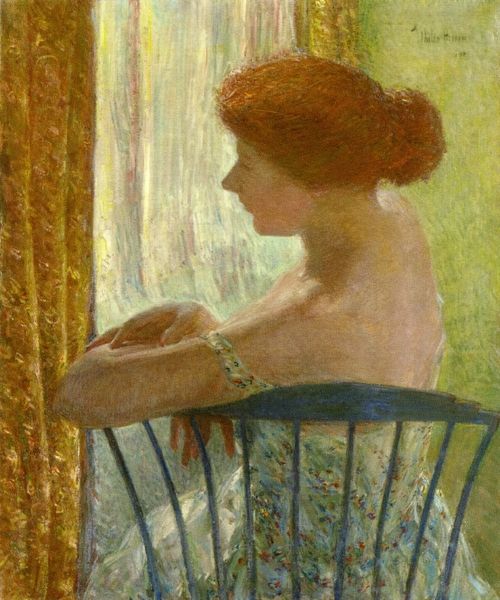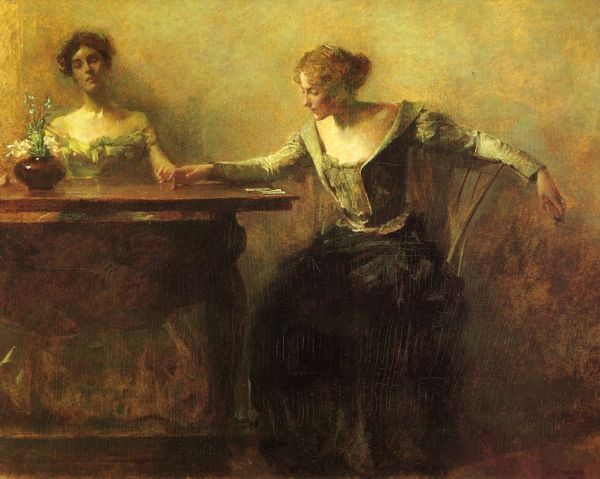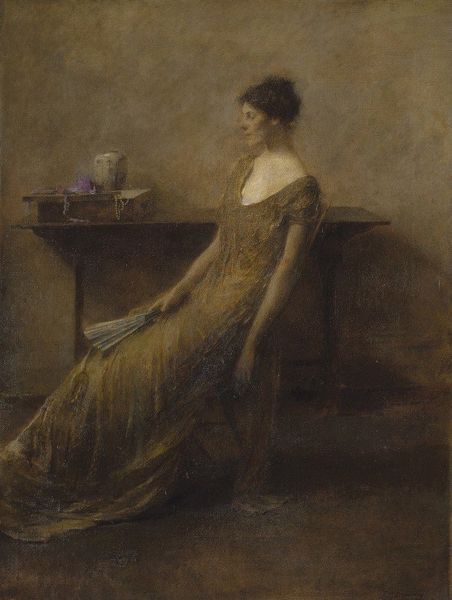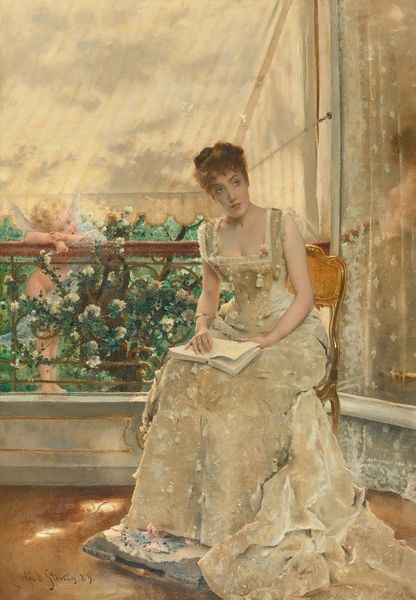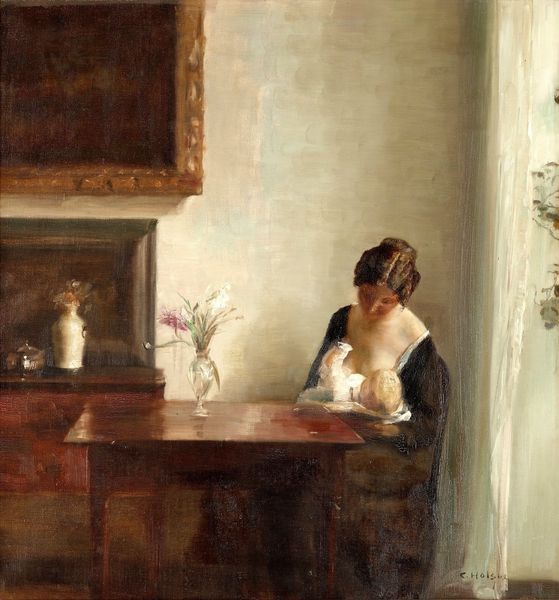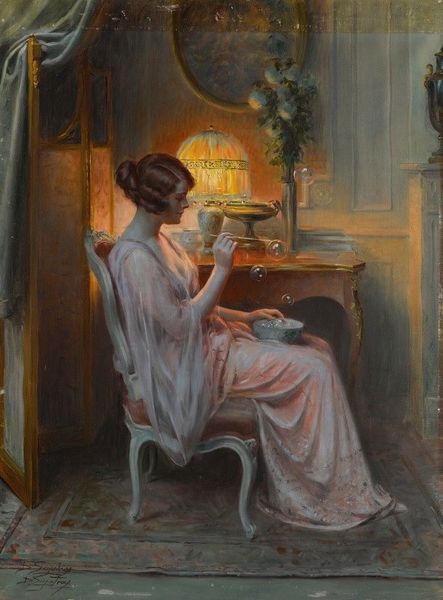
Copyright: Public Domain: Artvee
Editor: Thomas Wilmer Dewing’s “The Spinet,” from around 1902, is just stunning. The way the light catches the woman's bare shoulders… it’s melancholic and dreamy. What stands out to you in this piece? Curator: It's a whisper, isn’t it? A song almost heard. For me, it's about longing. The woman, back turned, becomes a vessel for our own quiet reveries. The blurry edges soften the reality, pushing it towards the ethereal. Dewing often explored the inner lives of women, and here, the music isn't just sound; it's emotion made visible. Do you get a sense of intimacy from the muted colors? Editor: Definitely. It's like we’re intruding on a private moment, but invited at the same time. I'm curious about the title - a spinet is a type of harpsichord, right? Does that instrument hold a particular significance? Curator: Absolutely. The spinet, unlike the booming concert grand, is a domestic instrument, suggesting intimacy, private music-making. It was often associated with women of leisure and refinement. What I find remarkable is how Dewing uses impressionistic techniques to veil, rather than reveal. It's about the mood evoked, the atmosphere created, rather than precise detail. Editor: So it’s less about *what* she's playing, and more about *that* she's playing? That makes sense. I originally just saw a pretty painting, but now I feel like I’ve glimpsed a whole world of unspoken emotion. Curator: Exactly! It's like Dewing opened a door and invited us to feel. And now we have. What a lovely feeling, no?
Comments
No comments
Be the first to comment and join the conversation on the ultimate creative platform.
